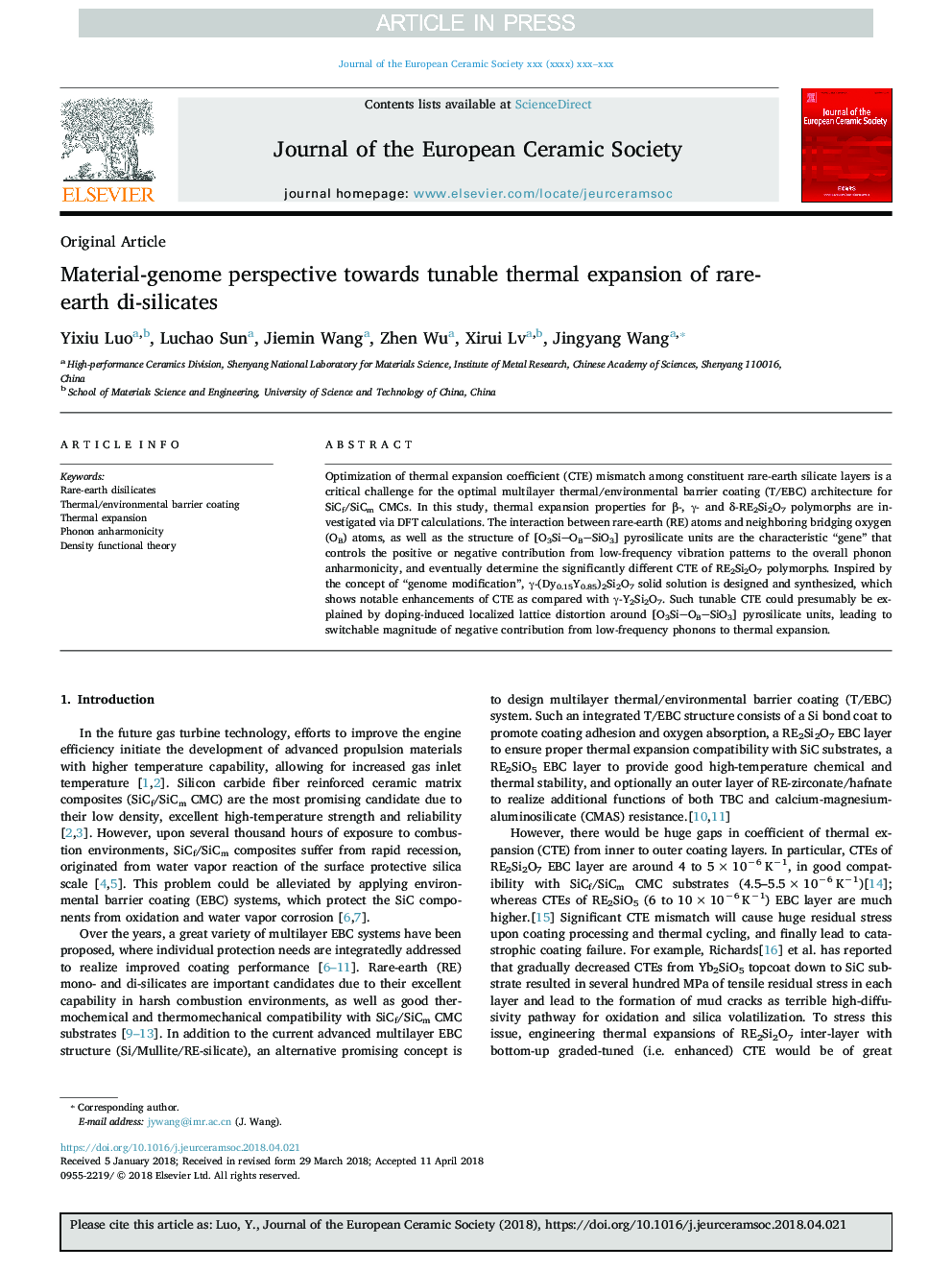| Article ID | Journal | Published Year | Pages | File Type |
|---|---|---|---|---|
| 7898082 | Journal of the European Ceramic Society | 2018 | 8 Pages |
Abstract
Optimization of thermal expansion coefficient (CTE) mismatch among constituent rare-earth silicate layers is a critical challenge for the optimal multilayer thermal/environmental barrier coating (T/EBC) architecture for SiCf/SiCm CMCs. In this study, thermal expansion properties for β-, γ- and δ-RE2Si2O7 polymorphs are investigated via DFT calculations. The interaction between rare-earth (RE) atoms and neighboring bridging oxygen (OB) atoms, as well as the structure of [O3SiOBSiO3] pyrosilicate units are the characteristic “gene” that controls the positive or negative contribution from low-frequency vibration patterns to the overall phonon anharmonicity, and eventually determine the significantly different CTE of RE2Si2O7 polymorphs. Inspired by the concept of “genome modification”, γ-(Dy0.15Y0.85)2Si2O7 solid solution is designed and synthesized, which shows notable enhancements of CTE as compared with γ-Y2Si2O7. Such tunable CTE could presumably be explained by doping-induced localized lattice distortion around [O3SiOBSiO3] pyrosilicate units, leading to switchable magnitude of negative contribution from low-frequency phonons to thermal expansion.
Related Topics
Physical Sciences and Engineering
Materials Science
Ceramics and Composites
Authors
Yixiu Luo, Luchao Sun, Jiemin Wang, Zhen Wu, Xirui Lv, Jingyang Wang,
